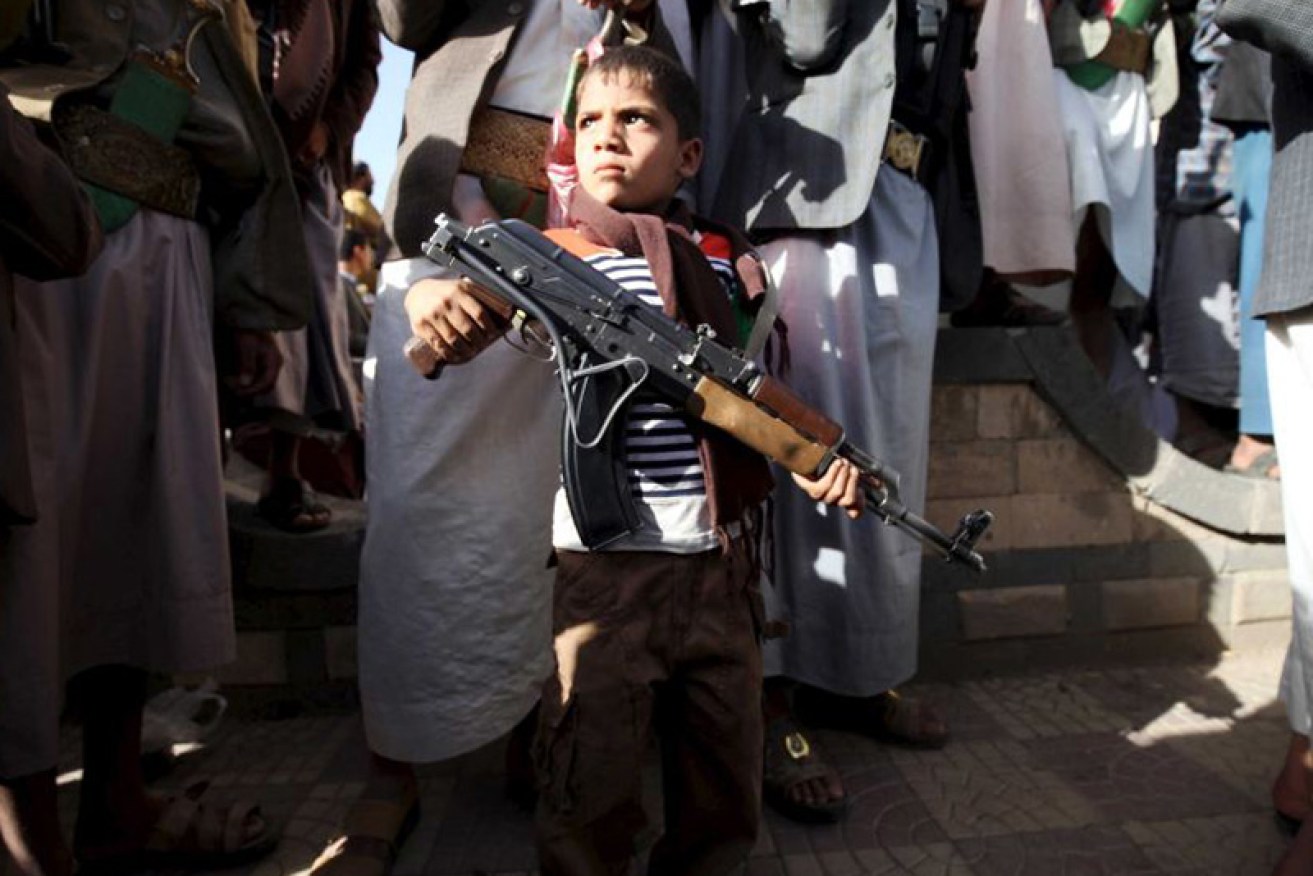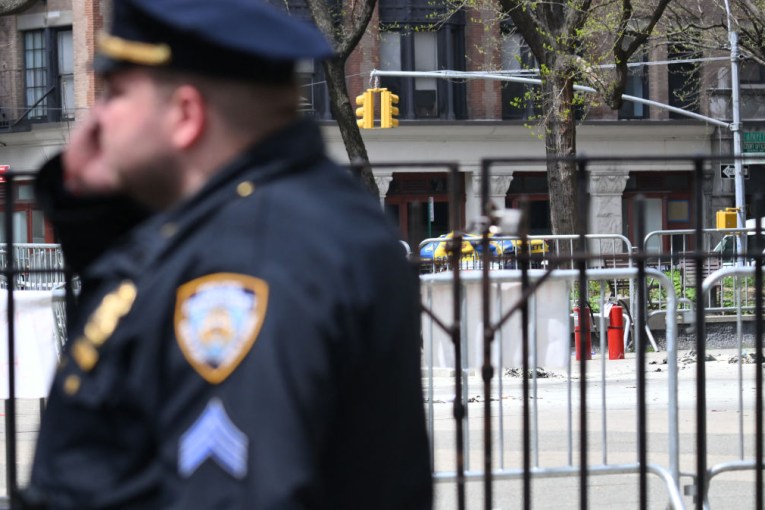The slow death of Yemen’s people

The United Nations refugee agency UNCHR estimates that up to 150,000 people have now been displaced by the deepening conflict in Yemen, where the UN reports that an increasingly distraught population is subjected to air strikes and shelling that are destroying homes and community infrastructure.
As the relentless campaign of air strikes continues day and night, freelance journalist Taha Yaseen reports.
Each night as residents of Yemen’s capital hear the blasts of air raids and see heavy anti-aircraft fire colouring the sky, they find a refuge in the basements below their houses. But this refuge cannot protect them from the crisis now engulfing their lives.
“Once night falls in Sana’a, we, the family, start waiting for air strikes of the coalition led by Saudi Arabia in order to escape to the basement of the house,” said Ahmed al-Matary, a resident whose house is near the targeted Republican Guards military camp, in the western suburbs of Sana’a.
Mr Matary is luckier than many. He says most houses in Sana’a cannot provide residents with adequate protection from air strikes, and kids take their chances, continuing to play football in neighbourhood streets even as the planes attack.
“We the men are brave enough, but women and [small] children, when they hear the blasts nearby, [they] scream, fearing that airplanes may mistakenly target us or the explosions of weapons stores may reach our house,” he said.
Their fear is justified. I recently watched as a small residential neighbourhood near Sana’a airport was hit, flattening houses and scattering debris.
Last night, strong explosions shook Sana’a city, as missiles struck a military camp in the Faj Attan area, shaking nearby houses, smashing windows. We rushed to the scene of the blasts, where I witnessed clouds of thick black smoke, with blazing fires rising into the air.
The aircraft strike without warning, hitting different targets for about 15 minutes before departing. The sound of jets overhead is horrible, particularly during the night.
During the day, the streets of Sana’a are no longer full of life and people.
Schools and universities have suspended their teaching, trading stores and many businesses have shut down, jobs have been shed and the markets are half empty.
Many families have fled Sana’a since March 26, when the Saudi-led Arab coalition launched Operation Decisive Storm, a campaign of air strikes to halt the military advance of Houthi Shiite rebels from their northern feudal stronghold.
The Houthis took control of Sana’a on September 21 last year as they expanded their territorial control to northern and southern provinces.

Men queue for gas in Sanaa, Yemen. Photo: AAP
Yemeni people the biggest losers in ‘proxy war’
The Houthis seized Sana’a and overthrew the government, but they did not put an end to the suffering of the Yemeni people whose country has been destabilised by political upheaval for four years.
Instead of providing stability and security, Houthi military control has opened doors for worse days, raising the prospect of even more hardship to come.
Despite deep divisions among people on their opinions of this war, many share a belief that both the Houthis and Saudi Arabia are damaging Yemen even further.
The consensus on Sana’a streets is that this war led by the Saudis is to defend Saudis — not Yemenis — and the biggest loser in this proxy conflict is Yemen and its ordinary people.
“This war is in favour of Saudi Arabia not Yemen,” said a university student who asked not to be named.
“Saudi wants to defeat Houthis since they are Iranian proxies threatening its security and stability. This proxy war between Iran and Saudi should be in a free desert on the planet but not in Yemen.
“Yemen must not be a testing ground for their battles.”

Boy stands with Houthis with Kalashnikov rifle. Photo: AAP
Children taking up arms and dying in scores
While some children play soccer in the streets during air raids, many others have become boy soldiers in the conflict.
All factions fighting on the ground recruit Yemeni children as young as 14, turning them into either casualties or killers.
These are our worst days ever. [There is a] fuel crisis, wheat is not there and [when it is] rarely found, we buy it for double the price.
Sana’a resident al-A’a al-Haraz
According to the World Health Organisation, 550 people have been killed in the fighting since March 19.
UNICEF estimates that at least 74 children are known to have been killed since March 26.
Samiah al-Aghbari, a Yemeni human rights activist, reported this week that some of the fiercest fighting continues in the strategically vital port city of Aden between Houthi fighters and forces loyal to the ousted president.
The death toll is high and most of the Houthi casualties are children.
“I saw many children on a Houthi police car with military uniforms carrying their guns,” Mr Aghbari says.
“They were smiling — they thought they were going to a picnic, they did not realise they were being driven to a battlefield.”
Sana’a residents facing food shortage, power outages
Saudi Arabia leads a coalition of nine Arab countries that has so far conducted about 1,600 air strikes against Houthi rebels and their allies.
The Houthis — backed by military units loyal to former president Ali Abdullah Saleh — are also leading offensives in the provinces of Aden, Taiz and Mareb, where they face armed resistance from forces supporting Mr Hadi.
With the Saudi-led coalition focusing more on military operations and paying less attention to subsequent humanitarian crisis, more hardships and suffering are inflicted on the daily life of Yemenis who suffer some of the highest rates of malnutrition, poverty and illiteracy in the world.

Cars queue for fuel in Sanaa, Yemen. Photo: AAP
The ongoing fighting on different fronts in many areas of the country is critically exposing people to the threat of humanitarian catastrophe.
Sana’a has experienced more than 72 hours of continuous blackout as power cables have been cut during clashes in the country’s north.
There is a shortage of fuel to run power generators and Sana’a residents are suffering their darkest days ever.
Fuel shortages worsen each day, paralysing life in Sana’a and other cities, and long queues of cars wait outside gas stations, the drivers angry and frustrated.
There is a shortage of food — very little wheat and a scarcity of water.
When food and water can be found, the prices have risen sharply.
Air and ground attacks, a naval blockade, and the monopolisation of traders profiteering from the war have all combined to create conditions that the people of Sana’a call “the worst days of slow death”.
“It’s been seven days since I am here lining up at the gas station waiting for my turn to fill out my car,” said al-A’a al-Haraz, a young man holding a Kalashnikov assault rifle in a car in downtown Sana’a.
“Today I did not get my breakfast because the money I have only to afford petrol.
“These are our worst days ever. [There is a] fuel crisis, wheat is not there and [when it is] rarely found, we buy it for double the price.
“There is no city water. We buy water [from] trucks at higher prices as there is no fuel for generators pumping water.
“We are tired. This is a slow death [and a] siege on all of our basic needs.”








